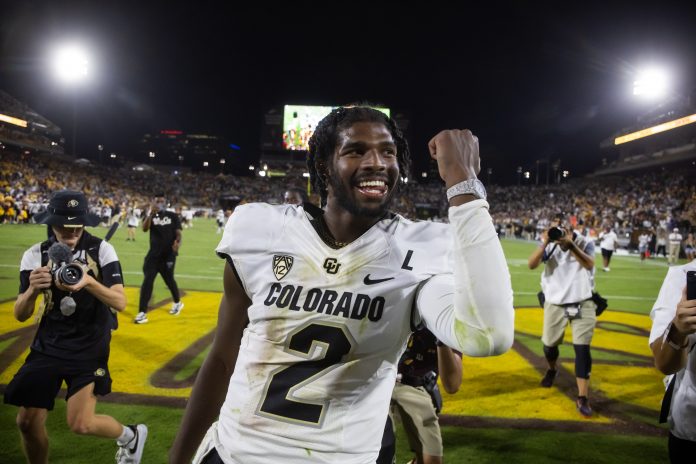Collectively, college athletics (most notably, college football) saw a massive overhaul to its previously-unchanged business model during the past two years. The name, image, and likeness (NIL) deal that spurned the change has now become common nomenclature within college athletics.
This, of course, happened when the Supreme Court levied its ruling against the NCAA in June 2021. So, what is the NIL, and where are we as a sport centered around amateurism since its inception?
What Is the Meaning of NIL?
Name, image, and likeness is the common term for the ruling of the NCAA v. Alston case. This case centered around whether the NCAA could limit education-related payments to student-athletes. At its heart, the case revolved around whether or not athletes could earn compensation based on their likeness and their athletic or public prowess.
NCAA vs. Alston followed a similar suit from 2014 titled NCAA v. O’Bannon, which was the ultimate downfall of the popular NCAA Football video game series as well as other officially licensed collegiate items that utilized players’ likenesses.
KEEP READING: Top 10 NIL Deals in 2024
In NCAA v. Alston, the NCAA lost the case on a unanimous vote, and the NIL was born, essentially stating students could now earn profits from their names, images, and their likeness. The ruling only dealt with education-related payments and failed to address any restriction on the compensation payments to the student-athletes or prospective student-athletes themselves. Its ruling against the NCAA came as several states had passed laws or were near to passing laws that gave student-athletes more control over their likeness.
The NCAA, with the assistance of the American Athletic Conference, consolidated two petitions into the Supreme Court ruling, essentially banning pay-for-play efforts at the college level as well as banning quid pro quo. Basically, student-athletes wouldn’t be allowed to be compensated for their performances, and recruits couldn’t sign any NIL deals with a contingency plan set in place for attending a certain university.
How Does the NIL Help Collegiate Athletes?
With the NIL ruling set in place, it finally allowed student-athletes to be compensated for their likeness. It allowed student-athletes to obtain sponsorships. To be paid for social media posts. It allowed student-athletes to sign endorsement deals. To sign with agents.
The student-athletes now could earn money based on their athletic stature or just simply their presence. The NIL essentially ended amateurism in a sense.
MORE: How Much Will Players Earn for Appearing in EA Sports College Football 25?
For far too long, student-athletes sat back and watched as colleges and universities prospered due to their efforts. Schools sold their jerseys, and the athletes didn’t see a penny. Teams promoted their efforts, and athletes never benefited one iota. The power was solely in the college or university’s hands. The NCAA v. Alston ruling put the power back in favor of the student-athlete.
Say what you will about student-athletes being given an education, room and board, books, etc. Far too many student-athletes come from backgrounds where that simply isn’t enough. No two student-athletes are the same or hail from the same background. The name, image, and likeness ruling leveled the playing field for those student-athletes. It makes it more fair, and, ultimately, makes collegiate athletics more fun.
What Is a NIL Agreement?
There is a bevy of potential NIL agreements. From signing with an agent prior to culminating their amateur career to sponsoring a nutrition bar, the NIL deals across the country are incredibly unique and diverse.
A NIL agreement is essentially a contract set in place for the student-athlete to earn fair compensation for their time and effort. To market their likeness. A NIL agreement could also be an endorsement deal on a local or national level.
In some cases, like at BYU, it could be a deal set in place by Built Bar where every Cougar athlete earns a certain compensation based upon a proprietary contract.
EA Sports Builds Rosters Via NIL Deals
The re-releasing of EA Sports’ popular college football video game has been front page news since the end of the 2023 season. EA will be releasing their long-awaited video game back to the public in the summer of 2024, and they’re using NIL deals to generate their rosters.
In February, EA Sports announced that they would send NIL contracts to every scholarship athlete on a major FBS program. The players could ‘opt-in’ to the game and would receive a $600 payment and a free copy of the game itself.
MORE: EA Sports Cover Options for All 134 FBS Teams
Following a rush of players announcing on their social media accounts that they’d done just that, EA announced in early March that over 10,000 players had opted into the game. They will now use their name, image, and likeness to adequately represent those players in the game.
NIL had officially gone full circle with EA Sports announcement and subsequent buy-in from the athletes, given the fact that former Northwestern QB Kain Colter nearly formed a union off his likeness being used in the 2012 edition, NCAA ’13.
Miss any action from the top college QB Rankings during the 2023 football season? Want to track all the movement with the college football transfer portal? College Football Network has you covered with that and more!

